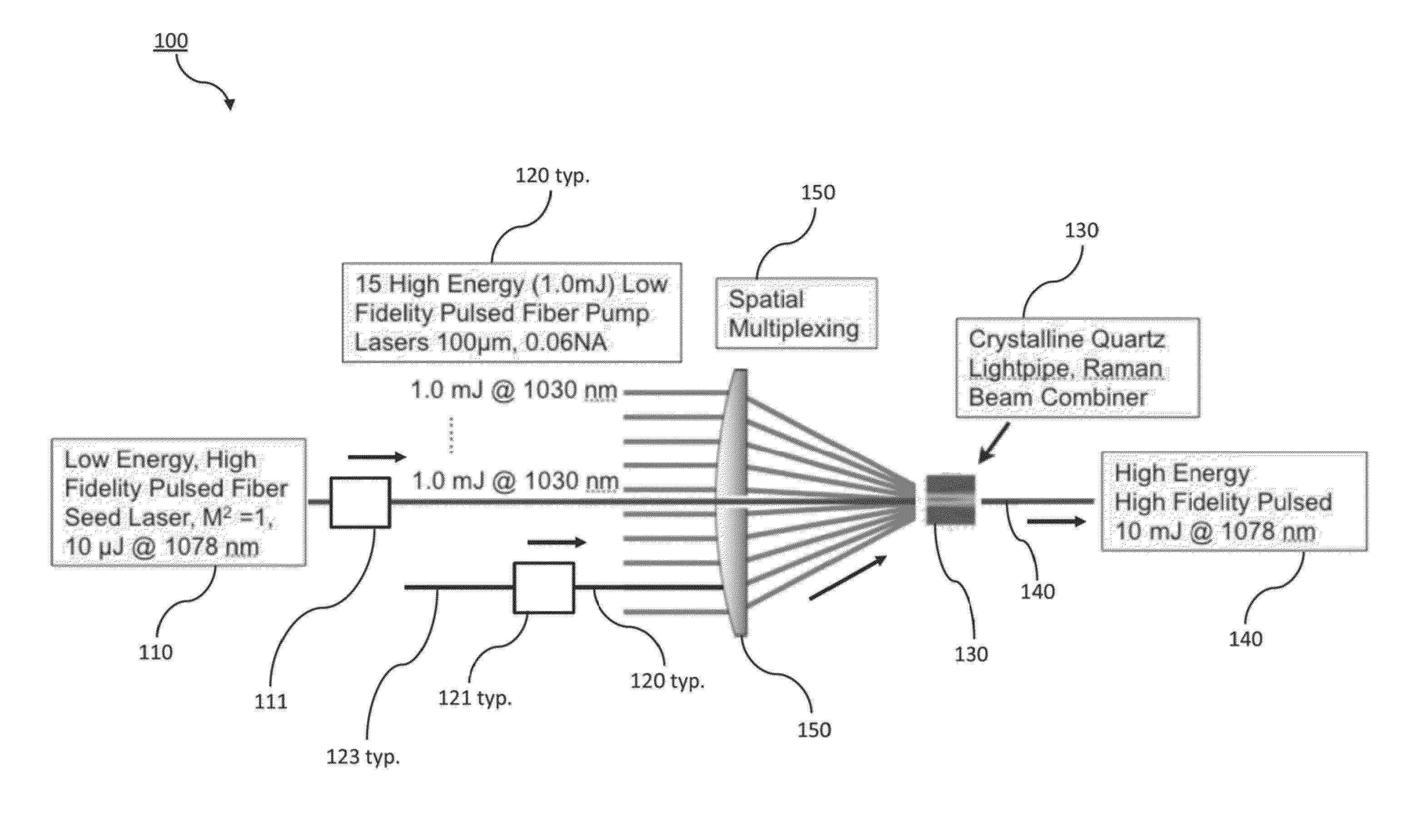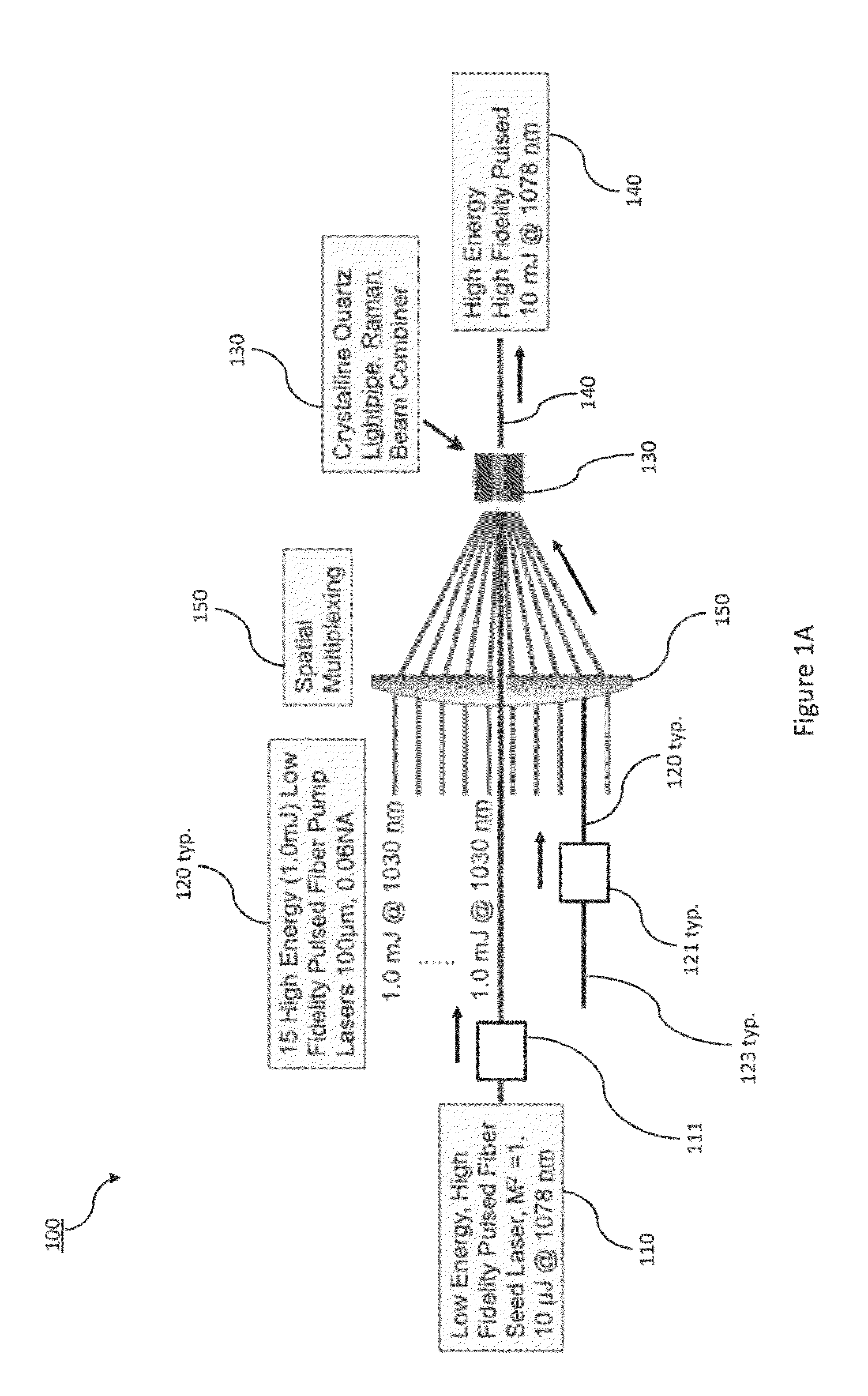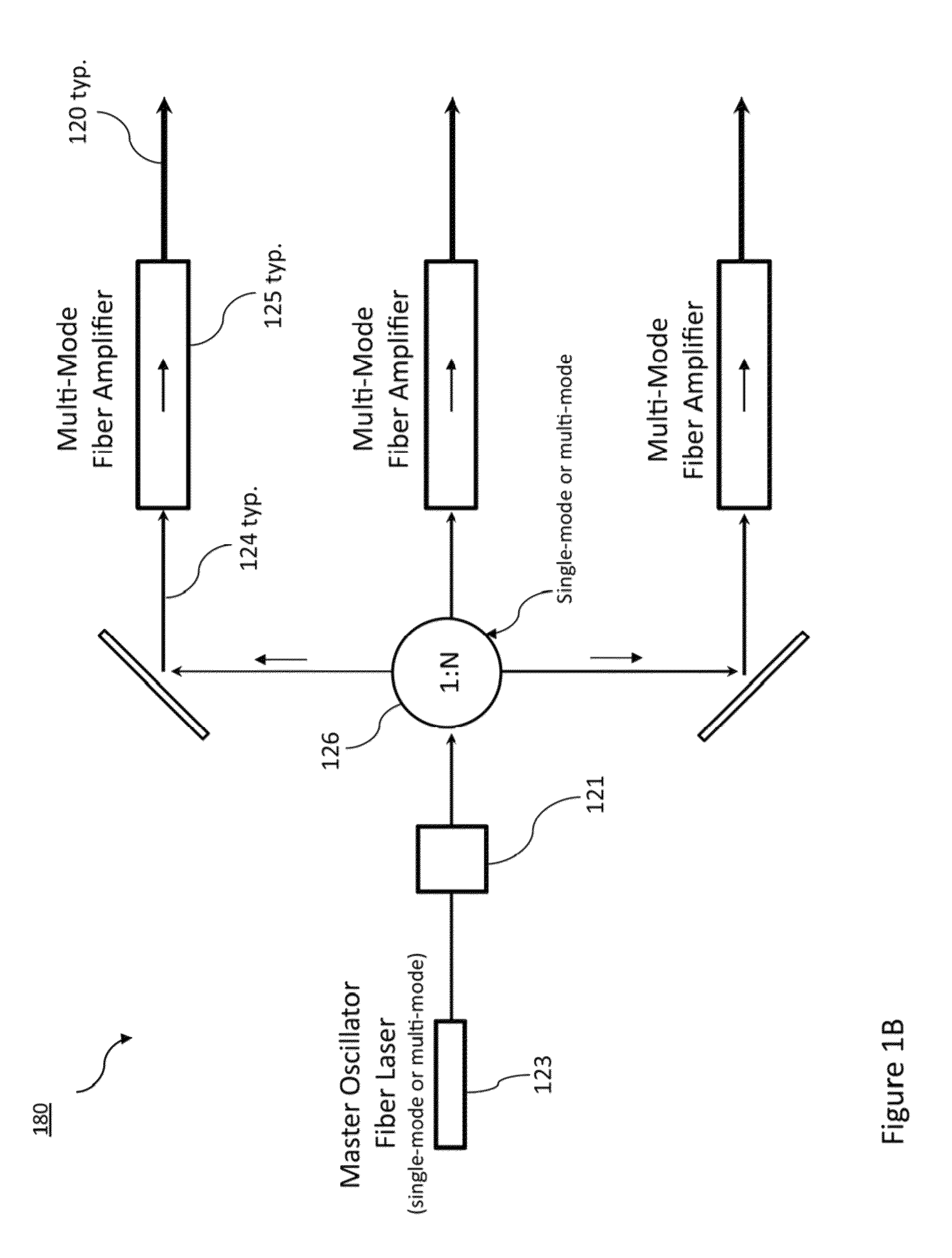Raman beam combining for laser brightness enhancement
a technology of laser brightness and beam combining, applied in the field of optical sources, can solve the problems of optical damage limitations, thermal and nonlinear optical effects, limiting the design of the laser itself, etc., and achieve the effect of enhancing the scaling of pulse energy and brightness
- Summary
- Abstract
- Description
- Claims
- Application Information
AI Technical Summary
Benefits of technology
Problems solved by technology
Method used
Image
Examples
embodiment
Point-Design Embodiment
Basic Details
[0081]The basic details of our point-design embodiment 500 is shown in FIG. 5, in which we introduce the reader to the basic components and operating principles of the system. (We offer a more detailed description of the system 500 in a subsequent section below, which is presented after a review of the physical mechanisms and optical competing processes. In what follows, however, a basic description is presented that highlights novel aspects of the invention.)
[0082]Returning to FIG. 5, we note that the enhanced Raman conversion system 500 is based upon a pair of crystal line quartz light-pipes, 530 and 531, cascaded in series. This pair of nonlinear materials forms the basic Raman beam combination medium, with a reimaging relay lens 551 at its mid-plane. In this design, each light-pipe is in the form of a long parallelepiped, with square end faces of dimension 700 μm×700 μm in cross-section. The first light-pipe 530 is 17.5 cm in length, which act...
PUM
 Login to View More
Login to View More Abstract
Description
Claims
Application Information
 Login to View More
Login to View More - R&D
- Intellectual Property
- Life Sciences
- Materials
- Tech Scout
- Unparalleled Data Quality
- Higher Quality Content
- 60% Fewer Hallucinations
Browse by: Latest US Patents, China's latest patents, Technical Efficacy Thesaurus, Application Domain, Technology Topic, Popular Technical Reports.
© 2025 PatSnap. All rights reserved.Legal|Privacy policy|Modern Slavery Act Transparency Statement|Sitemap|About US| Contact US: help@patsnap.com



